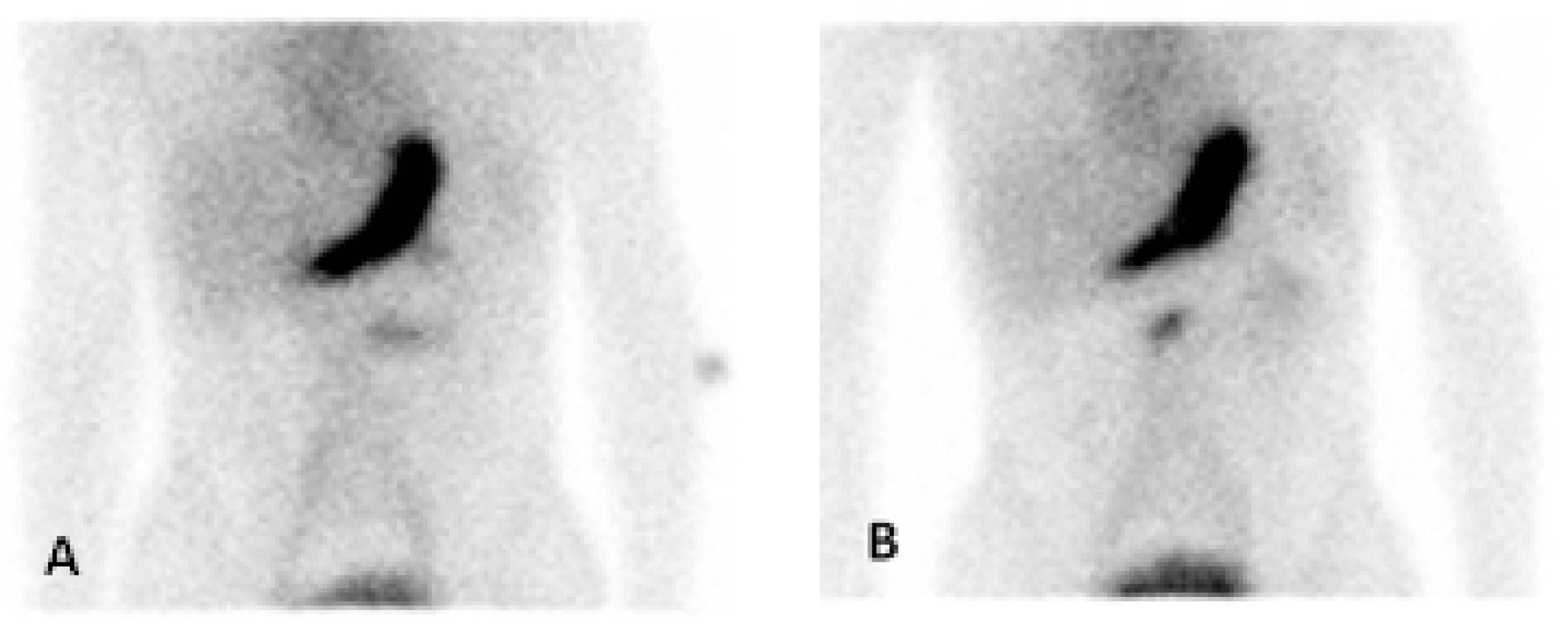Ectopic “Ectopic” Gastric Mucosa
Abstract

Author Contributions
Funding
Conflicts of Interest
References
- Kuru, S.; Kismet, K. Meckel’s diverticulum: Clinical features, diagnosis and management. Rev. Esp. Enferm. Dig. 2018, 110, 726–732. [Google Scholar] [CrossRef] [PubMed]
- An, J.; Zabbo, C.P. Meckel Diverticulum. In StatPearls [Internet]; StatPearls Publishing: Treasure Island, FL, USA, 2024. Available online: https://www.ncbi.nlm.nih.gov/books/NBK499960/ (accessed on 30 January 2023).
- Matsagas, M.I.; Fatouros, M.; Koulouras, B.; Giannoukas, A.D. Incidence, complications, and management of Meckel’s diverticulum. Arch. Surg. 1995, 130, 143–146. [Google Scholar] [CrossRef]
- Malik, A.A.; Shams-ul-Bari; Wani, K.A.; Khaja, A.R. Meckel’s diverticulum-Revisited. Saudi J. Gastroenterol. 2010, 16, 3–7. [Google Scholar] [CrossRef] [PubMed]
- Titley-Diaz, W.H.; Aziz, M. Meckel Scan. In StatPearls [Internet]; StatPearls Publishing: Treasure Island, FL, USA, 2024. Available online: https://www.ncbi.nlm.nih.gov/books/NBK560500/ (accessed on 25 July 2023).
- Levy, A.D.; Hobbs, C.M. From the archives of the AFIP. Meckel diverticulum: Radiologic features with pathologic Correlation. Radiographics 2004, 24, 565–587. [Google Scholar] [CrossRef]
Disclaimer/Publisher’s Note: The statements, opinions and data contained in all publications are solely those of the individual author(s) and contributor(s) and not of MDPI and/or the editor(s). MDPI and/or the editor(s) disclaim responsibility for any injury to people or property resulting from any ideas, methods, instructions or products referred to in the content. |
© 2024 by the authors. Licensee MDPI, Basel, Switzerland. This article is an open access article distributed under the terms and conditions of the Creative Commons Attribution (CC BY) license (https://creativecommons.org/licenses/by/4.0/).
Share and Cite
Haq, A.; Haghighat Jahromi, A. Ectopic “Ectopic” Gastric Mucosa. Diagnostics 2024, 14, 1162. https://doi.org/10.3390/diagnostics14111162
Haq A, Haghighat Jahromi A. Ectopic “Ectopic” Gastric Mucosa. Diagnostics. 2024; 14(11):1162. https://doi.org/10.3390/diagnostics14111162
Chicago/Turabian StyleHaq, Adeel, and Amin Haghighat Jahromi. 2024. "Ectopic “Ectopic” Gastric Mucosa" Diagnostics 14, no. 11: 1162. https://doi.org/10.3390/diagnostics14111162
APA StyleHaq, A., & Haghighat Jahromi, A. (2024). Ectopic “Ectopic” Gastric Mucosa. Diagnostics, 14(11), 1162. https://doi.org/10.3390/diagnostics14111162





